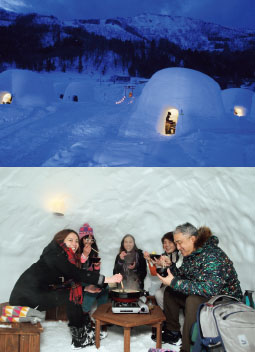Home > Highlighting JAPAN > Highlighting Japan April 2019 > Heisei Highlights
Highlighting JAPAN


Japan’s Three-Decade Tourism Boom
Visitors to Japan have increased elevenfold in number over the past three decades, and those travelers are increasingly going beyond major cities such as Tokyo and Kyoto to explore lesser-known regions as well. The Japan Tourism Agency discusses its strategy for attracting sixty million visitors to Japan by 2030.
According to the Japan Tourism Agency (JTA), 2.84 million international travelers were visiting Japan yearly by the beginning of the Heisei Era in 1989. By 2018, however, that number had jumped to 31.19 million—far more than the traditional crowds of Japanese people traveling abroad. After the Visit Japan Campaign started in 2003, the flow of visitors from various countries strengthened, hitting record numbers six years in a row since 2013. Arrivals from China, Korea, Taiwan, Hong Kong, Thailand, Singapore and other Southeast Asian countries grew rapidly, making up almost 84.5 percent of total arrivals in 2018.
Alongside this influx has come a change in the destinations international visitors choose. In 2011, 66.5 percent of tourists would cluster in well-traveled regions and cities such as Tokyo, Kanagawa, Chiba, Saitama, Aichi, Osaka, Kyoto and Hyogo, while 33.5 percent went to other regions. However, a JTA report shows that in 2017 fifty-nine percent of visitors from abroad stayed in major areas and forty-one percent sought out the charms of other regions.
In the midst of all these changes, in 2016 the JTA proposed a new policy called the “Tourism Vision to Support the Future of Japan,” developing various measures based on this vision of the country as a travel destination. One of the ideas was to strengthen promotions using information and communications technology. The data collected would include things such as big data and analysis of social media related to inbound tourism, which would allow them to provide tourism information related to user interests and preferences more effectively. This information would also be used to introduce the charms of regions international visitors would be less familiar with. In addition, the agency is focusing on getting more tourists from potential growth regions like the Middle East and Central and South America.
To boost visitor satisfaction, the JTA is focusing on bringing more people to places where they can experience the charms of Japan’s natural scenery and culture firsthand, which had been overlooked resources. Ideas include evening performances of traditional performing arts, nature experiences in forests, and visiting beaches in all seasons. There are also plans to start promoting “staycations,” where visitors stay in retro kominka traditional houses or ryokan inns as an experience in and of itself.
Takayama City in Gifu Prefecture was one of the pioneers in welcoming visitors. Their efforts to cater to international visitors—that included setting up tourist information centers and free Wi-Fi—resulted in a huge surge in visits, with over five hundred thousand visitors in 2017. After the Hokuriku bullet train began operating, Iiyama City in Nagano Prefecture doubled its activity sales by providing information centers and promoting dining experiences in kamakura snow huts.
In response to requests from visitors to Japan—such as shorter entry and departure procedures and more accessible public transportation from airports and harbors—the JTA plans on creating a stress-free and convenient travel experience by cutting down time at immigration with facial recognition or pre-registration, multilingual transportation assistance, and free Wi-Fi services. Starting in January 2019, some of these services will be funded by the International Tourist Tax. They plan to use these funds to bolster the country’s tourism infrastructure so that payers will be satisfied.
The many new tourism programs created over the thirty years of Heisei have made it easier for travelers to experience Japan’s charms. With a new era and various projects coming up to showcase relatively unknown regions and cultural and culinary facets of the nation, Japan will continue to be a land people want to visit.
※Information in this article is based on data provided by the JTA.
© 2009 Cabinet Office, Government of Japan








